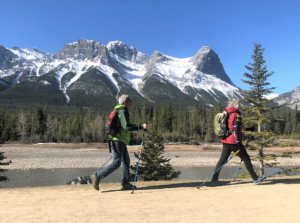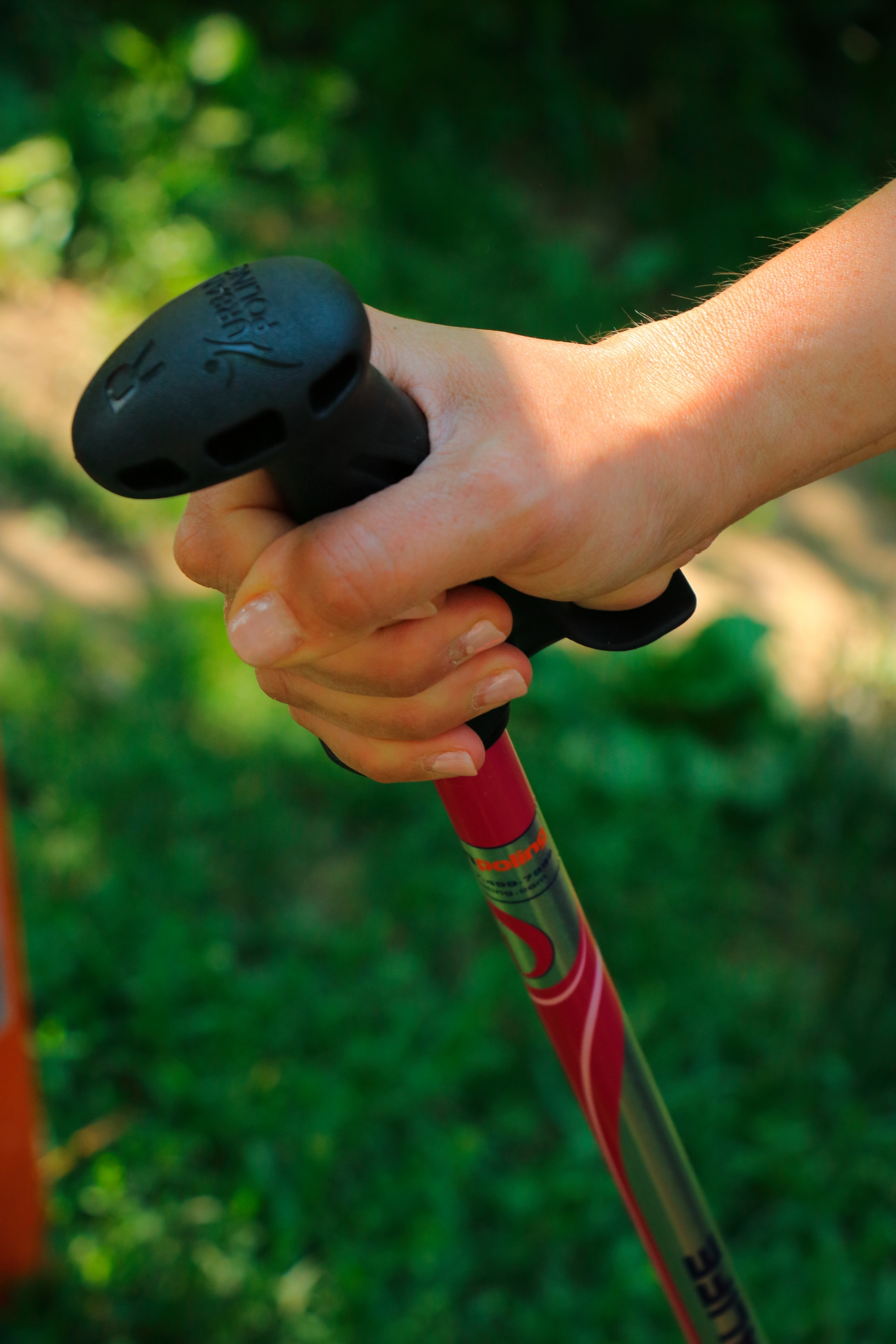Nordic Walking – Not Just a Walk in the Park By Sue Slaght
“What’s the difference? Isn’t Nordic walking just walking with hiking poles?”
When I ask friends, “Have you ever tried Nordic walking?” this is the usual response.
I admit it is exactly what I think, when Mandy Johnson, owner of Active By Nature in Canmore, offers to take us Nordic pole walking.
My regular hiking poles are well traveled. From the Inca Trail in Peru to the muddy, root-filled terrain of Canada’s West Coast Trail, the poles are a constant companion. How different can a Nordic walking workout be?
Nordic walking benefits
My chicken-wing triceps complain less than five minutes into our adventure with Mandy. With urban poles in hand, I concentrate on pushing back on the foot-like appendage at the ends of each pole.
Nordic walking simulates the movements of cross-country skiing. Nordic poles are shorter than cross-country ski poles. However, when used correctly, the poles propel a walker forward along a trail or sidewalk.
Mandy explains that ordinary walking engages the muscles from the waist down. Whereas Nordic walking uses virtually every muscle in the body.
My I’ve-been-watching-too-much-Netflix-abdominals twinge in agreement.
She refers to pole walking as a ‘Turbo Charge’ for walking. As well, while burning mega calories, the activity offloads stress on lower body joints.
May the knees, hips, and ankles of this former runner rejoice.
According to Harvard Health, evidence confirms that Nordic walking burns more calories than regular walking, estimating a range from an increase of 18% to 67% more. As well, the exercise decreases anxiety and chronic pain while increasing muscle strength, endurance and flexibility.
Nordic walking for seniors
Although originally designed for cross country skiers to train in summer, urban pole walking is growing in popularity with seniors.
With having more ground contact points, the stability of walking is far greater than with two feet alone.
Having taken a nasty fall one month prior on an icy trail, I test out the added grip of the poles on icy patches of our Canmore walk. Happily, the ice is no match for the added stability provided by the Nordic walking poles.
As we walk, Mandy discusses posture and aging. Prone to slouching, I straighten up at the mention.
Demonstrating how seniors bend over when using a cane or walker, she cautions that these mobility aids can have a long-term detrimental effect on mobility.
Using Nordic walking poles, the emphasis is on standing tall, rather than hunching over. In an instant, I can visualize curved-back nursing home residents shuffling down hallways.
Meanwhile, we meet several sets of smiling, straight-backed seniors in Canmore, poling happily along trails. Socializing clearly an added benefit to the exercise.
Nordic pole walking technique
While the instruction seems easy enough, my lack of coordination pays an unwelcome visit. How hard can it be to swing one’s arm with the opposite leg?
Mandy gently coaches me along, with tips of counting until the rhythm becomes natural.
After that, it is the technique of pushing back on the poles, where the added workout comes in. For years my hiking poles have dangled about my wrists, tapping my way along a trail until an obstacle presents itself.
It is the pushing back on the Nordic pole, propelling me forward, that awakens my triceps. Lost in their sluggish slumber, the muscle group is surprised at their call to action.
As with any exercise, the intensity can vary and be adjusted to the individual. In Nordic walking, the longer the stride and pole thrust, the more vigorous the workout.
With arms bent at 90 degrees at rest on the urban poles, Mandy encourages straight arms to match our stride.
You can access the full article here



There are no comments